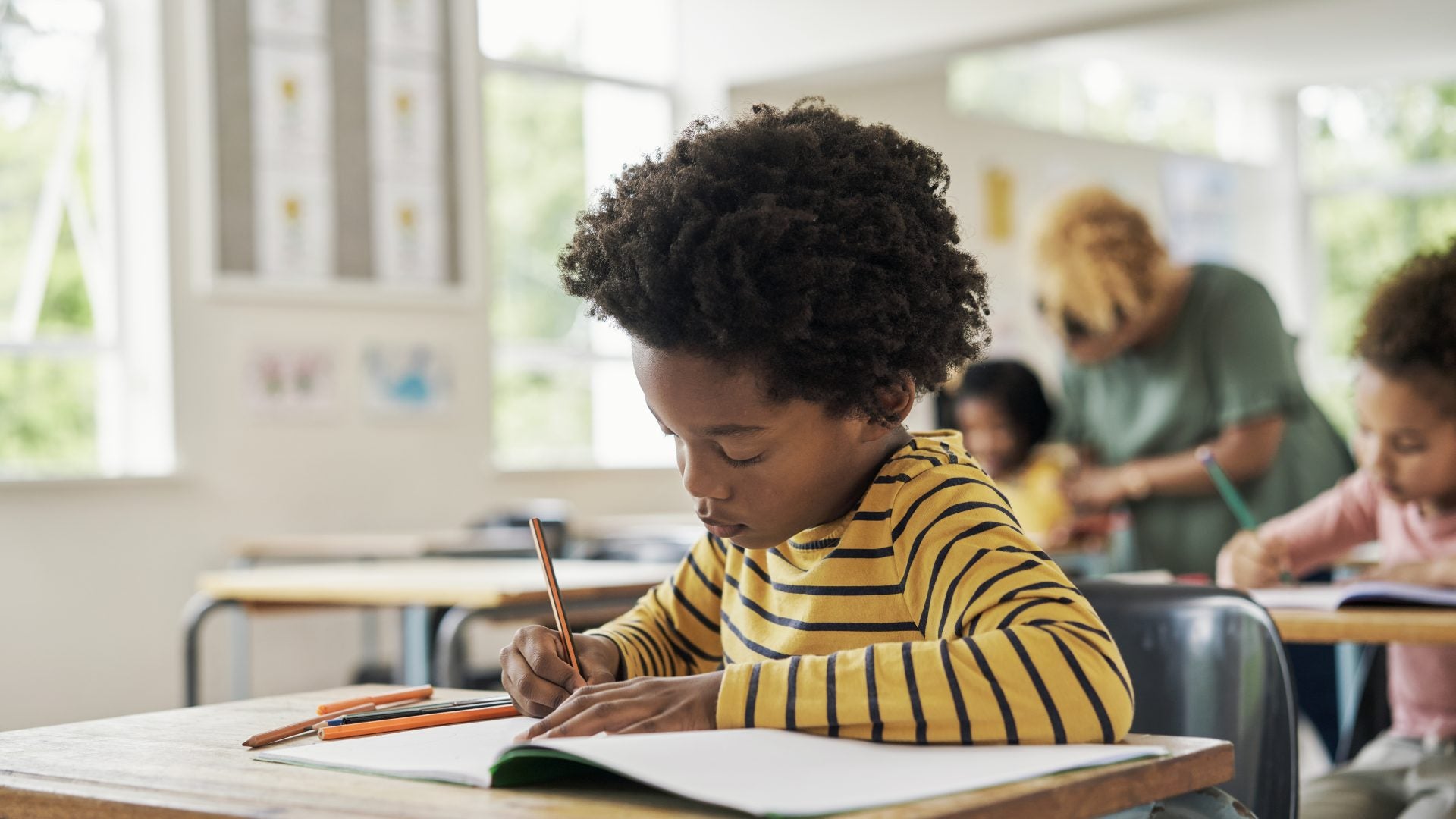
DEI is the acronym of the moment. In Donald Trump’s latest targeting of Diversity, Equity and Inclusion, he attempted to end federal funding to schools that do not eliminate diversity initiatives and has created an “End DEI” portal for students, parents and teachers to snitch on any perceived DEI programs in schools. Although a federal judge largely blocked Trump’s executive orders that sought to end federal funding for DEI programs, the damage will persist. While we continue to turn on each other over these attacks, those most impacted will be silenced from the conversation: Black children.
Those who have been around or worked with youth know that they are always watching and listening. As a therapist specializing in healing Black youth and their families from racial stress, I have learned from them how DEI debates impact their mental health.
During Trump’s first run for office, a Black teen told me: “When I see the news… I just think [about] what it’s gonna be [like] for Donald Trump to be president, and then I start thinking about how I can’t get a job, and then after I start thinking about my race.”
My client understood even back then how racist, xenophobic, scapegoating rhetoric from a presidential candidate would translate into policies that would further enforce a racist system and keep him at a disadvantage. Now, Trump doesn’t even have to skirt around it – his word is bond.
Make no mistake: our youth have and will internalize these messages. They will be impacted by this rhetoric at a critical juncture of their lives.
But if we push back, they could have the opportunity to see how diversity, equity and inclusion can directly benefit them and their peers to advance progress for all. That will only happen if we come together across sectors with individuals and leaders in politics, education, business, health, and the community to keep DEI at the forefront of our collective work.
The reality is, diversity creates better outcomes. Having a diverse student body and learning different histories provide better opportunities for all students, not just Black students. Research shows that white students from diverse schools had higher levels of civil engagement, feelings of physical safety and a stronger sense of belonging in school. We also know that all students who learn in a diverse setting and study diverse topics have better academic and social outcomes. They learn to understand, respect and celebrate those different from them, and in the process, improve their mental health.
We develop an awareness of resource allocation and racial discrimination at a young age, which is why providing children with equity is critical. When young people of disadvantaged backgrounds get more exposure to the resources of other communities, they see benefits in life outcomes. Depriving children of living their best lives, which in our society mainly affects those of color and who are impoverished, is cruel — especially when we have data that shows that solutions in housing, education and nutrition work. Attacks on DEI means ending programs that give children from intentionally under-resourced backgrounds an equal opportunity to access resources or halting research on how to eradicate these inequities in the first place.
Finally, students of color are psychologically more assured and less likely to be disciplined harshly when there is greater inclusivity in their classrooms. This helps break the school-to-prison pipeline, where students of color, especially those with disabilities or a history of poverty or neglect, are isolated and pushed into the criminal legal system by teachers and administrators instead of receiving extra resources. Rather than having two times more law enforcement for Black students in schools, investing in therapeutic and trauma-informed approaches can help to integrate care into school settings and retain students within classrooms. Inclusive practices have lifelong effects.
I’ve been in classrooms working directly with youth as a teacher and therapist, and trust me – they don’t see the political issues we’re facing as too complex to grasp. Once, when I was talking with a group of kindergarteners about my job as a clinical psychologist, I asked if they could help me define racism. “Trump,” one student said plainly.
At 5 years old, this child understood that Trump’s words and actions harm our vision for a diverse, equitable, and inclusive nation. DEI initiatives are about redressing prior and continuous harms, and their removal will mean that historically marginalized groups can’t live their lives optimally, just like my teen client from 2016 predicted.
In this moment, as Trump threatens to trample on initiatives that have improved outcomes for Black youth throughout their lives and in different areas, will individuals and institutions fight back or will we sit this one out and let this administration run wild?
To protect our community, we must turn again to what history and our ancestors have taught us: show sustained activism at school board meetings, provide education and activities for our children in homes, neighborhoods, and organizations, withhold our money from those who do not support our values, and voice our dissent whenever we can. This will be a long and uphill fight, but that is where our village comes in. Remaining in community with friends, neighbors, and colleagues will help us to relieve each other and be mindful we’re doing this for our children’s future. They need us now more than ever – they’re watching.
—
Dr. Riana Elyse Anderson is a licensed clinical and community psychologist, associate professor at Columbia University’s School of Social Work, Fellow at Harvard’s Hutchins Center for African & African American Research, and affiliate with the FXB Center for Health and Human Rights at Harvard University.





